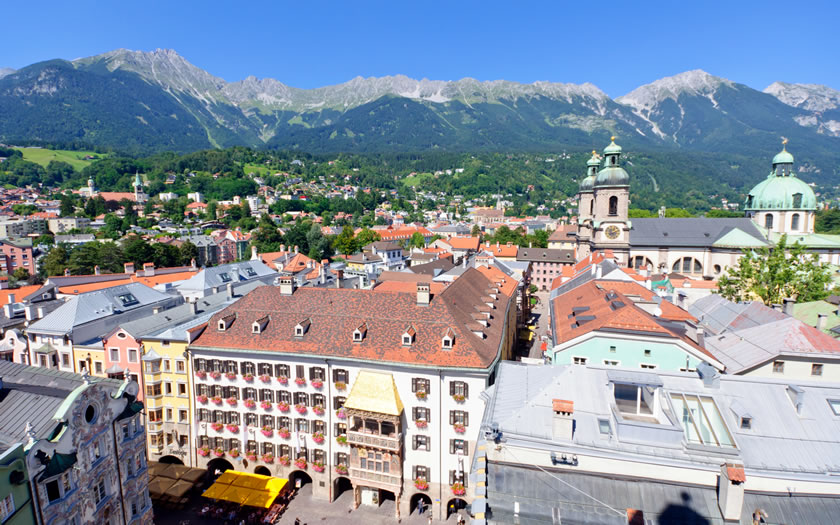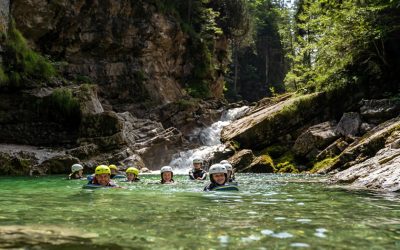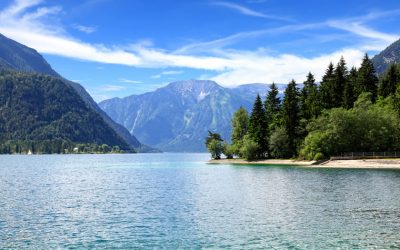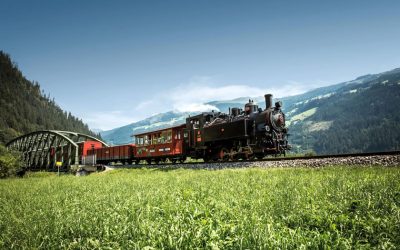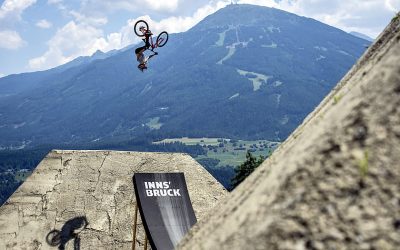Last updated on April 26th, 2022 at 11:10 am
Anyone arriving into Innsbruck airport will enjoy stunning views of the Austrian Alps and the centre of Innsbruck as they head in shortly before landing.
It can be tough to choose which things to do as visitors to Innsbruck are spoilt for choice – whether it is outdoor experiences or historic sites – or maybe just strolling around and enjoying the scenery of a city so obviously connected to the surrounding mountains.
One thing that any visitor might look into picking up is the Innsbruck Card. This is the kind of limited time card which will be familiar to most city visitors, with the Innsbruck Card being available for 24, 48 or 72 hours. It can be purchased at Innsbruck Tourismus, the city tourist office located just on the edge of the Innsbruck old town, or at the various ticket offices and major hotel receptions.
The Innsbruck card includes entrance to museums, mountain lifts, local buses and the Sightseer bus service, and to nearby attractions like the Swarovski Crystal World. There is also a cheaper Innsbruck Card light, which is only available for 24 hours and does not include the lifts and the further flung attractions.
Things to do in Innsbruck itself
The historic centre of the city – the old town – houses plenty of sights. Most approach it down the Maria Theresien Strasse (the ‘Oxford Street’ of Innsbruck with the classic view into the Golden Roof with the Nordkette mountains behind.
The Golden Roof
The Golden Roof is actually originally part of the Hofburg palace – (the current Imperial Palace complex is just to the right of it, looking at the Golden Roof). As all the guidebooks will tell you, the Golden Roof is not golden at all, rather gilded copper tiles shining in the sunlight.
The balcony covered by the roof was build by the Emperor Maximilian and his two wives, Bianca Maria Sforza, his wife at the time, and his first wife, Maria of Burgundy, are pictured in the decorations.
The Imperial Palace
The original Hofburg goes back to the fortified Imperial Palace of the original Counts of Tyrol. Once the Hapsburg family took control they started buying up property around it. Although the Emperor Maximilian I is often credited with creating the original Gothic palace, the building work was started by one of his predecessors.
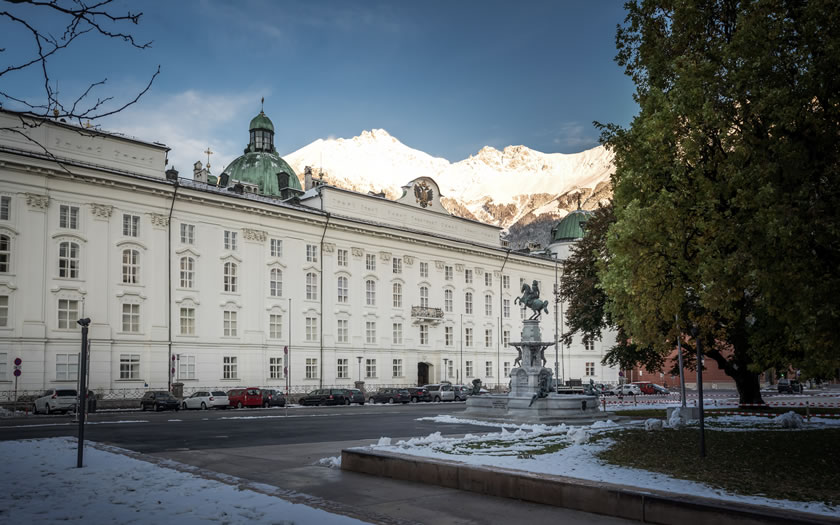
Over the centuries it became a Renaissance-style castle and then was subsequently remodelled in the Baroque style by the Empress Maria Theresia. The 19th century saw further changes by the governor of Tyrol for the Empress Elizabeth (better known to Austrians as ‘Sisi’).
Tours of the Hofburg Palace apartments and historic rooms are regularly held and there is a museum with a special exhibition about the Emperor Maximilian I.
The Stadtturm
You could almost miss the Innsbruck city tower on the right of the pedestrian part of Maria Theresien Strasse walking down towards the Golden Roof.
It is one of the best places to get close-up views over Innsbruck old town at the top of its 133 steps although, if any visitor is planning on heading up to the Bergisel ski jump or on the lifts to the Hungerburg, the views are even more stunning from there.
The Innsbruck Cathedral
The cathedral is located right next to the Hofburg palace and is dedicated to St James. (St. James is called St. Jakob in German, so the official German title on maps is ‘Dom St. Jakob’).
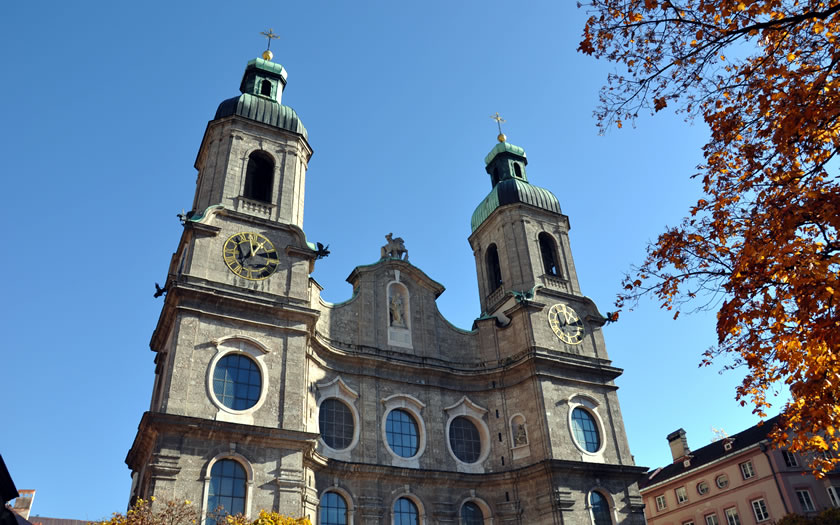
The original church dates back to the 11th century and, after repeated rebuilding, it eventually became the parish church of Innsbruck. The current building is from the 18th century when it was remodelled following damage caused by earthquakes over the years.
It only became Innsbruck cathedral in 1965 – the diocese of Innsbruck was only created in the 20th century when it was split from the diocese of Brixen in the Italian South Tyrol following World War I.
Just outside the Innsbruck old town
Walking out of the old town with the Golden Roof at one’s back, the visitor heads down the Maria Theresien Strasse, the central thoroughfare of the city.
Triumphal Arch
The Triumphal Arch comes into view as the visitor exits the pedestrianised part of the Maria Theresien Strasse. It was built in the time of the Empress Maria Theresia to mark the wedding celebrations of her son. Unfortunately, her husband (the father of the bridegroom) died during the preparations and so the Triumphal Arch was completed with one side with images of celebration and one side in mourning.
Heading out of the old town in another direction past the Imperial Palace, visitors will come across two of the city’s important sights: the Imperial court church (the ‘Hofkirche’) and the Tiroler Volkskunstmuseum (the Tyrolean Folk Art Museum).
The Hofkirche
The Imperial court church is renowned for the silent group of black bronze figures who watch over what appears to be an empty tomb. The ‘tomb’ belongs to the Emperor Maximilian I, who was actually buried far away in Wiener Neustadt and the surrounding figures are fellow rulers and figures from mythology.
The Imperial church was built in the 16th century by the Emperor Ferdinand I and was intended as a cenotaph for his grandfather Maximilian. The Hofkirche is also the resting place for some of the heroes of the Tyrolean rebellion against Napoleonic rule in the early 19th century, including the folk hero Andreas Hofer.
The Tiroler Volkskunstmuseum
The Tyrolean Folk Art Museum is next door to the Hofkirche church and offers a chance to see what it was really like to live in a Tyrolean farmhouse in previous centuries or to wear traditional local costume in one of the villages or to painstakingly carve a wooden Christmas crib with its collection of figures and animals.
Walking down past the Imperial Palace, visitors will see a strange flowing blue-white structure outside the Congress Innsbruck building before they get to the river Inn. This entrance, designed by prominent architect Zaha Hadid, is the start of the Hungerburg funicular railway up into the Nordkette mountain range.
Hungerburg Funicular Railway
The Hungerburg funicular starts within a short walk of Innsbruck old town. It runs from the underground stop at the Congress Centre along and across the Inn river before climbing to the Hungerburg area of the city and the Innsbruck Alpine Zoo.
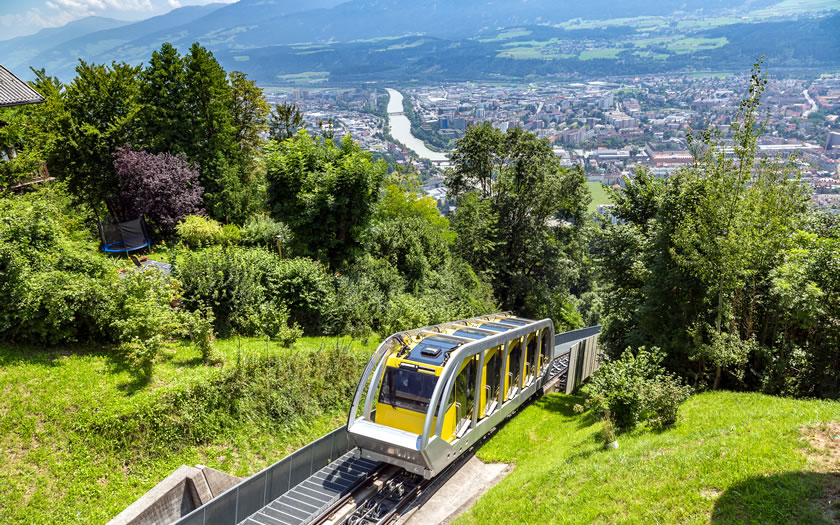
From the top of the Hungerburg railway, the Seegrube cable car leads up into the Nordkette mountain range. In winter skiers and snowboarders can head out onto the slopes from here while, in summer, hikers might like to jump on the third stage up to the Hafelekar and explore some of the spectacular walks in the Karwendel mountains.
Over on the southern side of Innsbruck, the historic Bergisel hill is another one of the best places to get a view of the city below.
Bergisel Ski Jump
The famous ski jump on the Bergisel is clearly visible from all parts of the city. Used in the the 1964 and 1976 Winter Olympic games, the current sleek construction is another designed by Zaha Hadid.
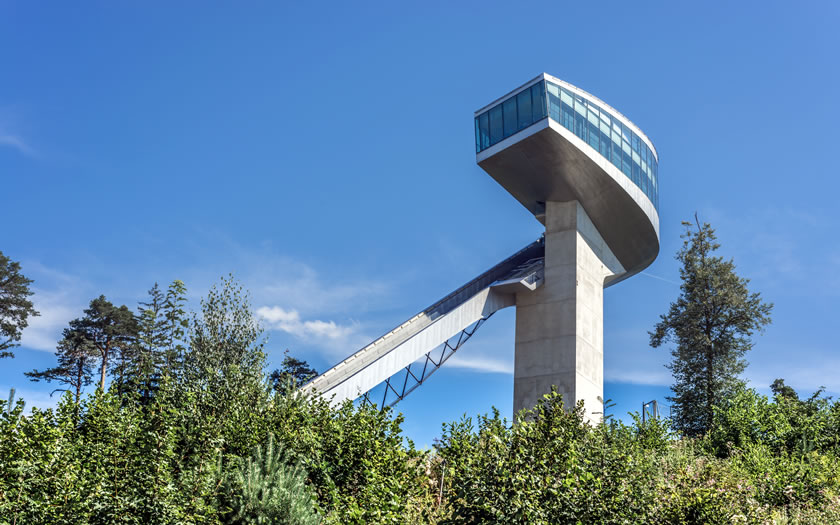
Visitors can enjoy the panorama from a viewing platform at the top of the jump (or from the restaurant inside). And yes, from the top, it still looks like they are jumping down into the graveyard in Wilten!
Tirol Panorama
While the Bergisel is mainly known for its Winter Olympic history it is also now home to one of the city`s major historical attractions. The Tirol Panorama Museum was opened to display the giant panoramic painting of the Battle of the Bergisel in the Napoleonic era. The 1000 square metre circular painting, created at the end of the 19th century, was originally shown in its own building near the river Inn and the Hungerburg funicular.
Schloss Ambras
Ambras castle is a short distance outside Innsbruck above the eastern exit onto the Inn valley motorway. The castle, which dates from the 16th century, can be reached on foot from the DEZ shopping centre on the eastern outskirts of the city or via the tram route up to the suburb of Igls.
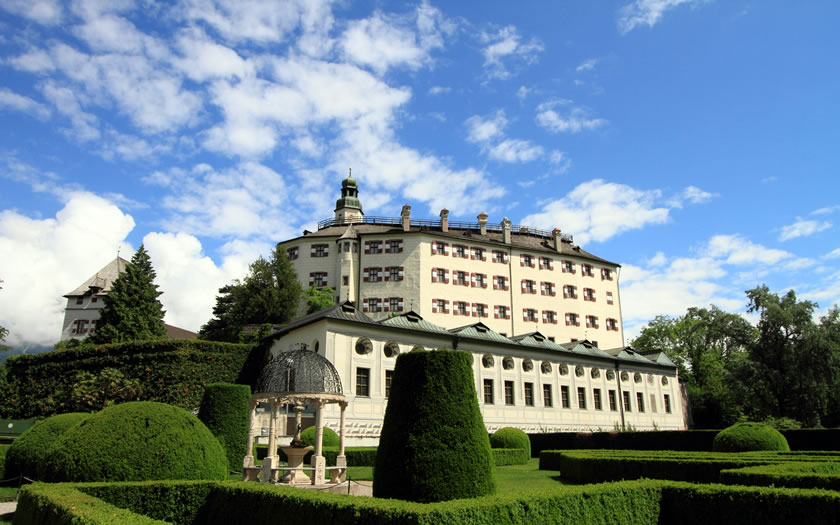
The Ambras castle gardens and the surrounding area are a popular location for locals to walk but the interior of the Renaissance building also attracts visitors. The Spanish hall is a long room decorated in Renaissance style with portraits of the Hapsburg family. Visitors can also view the Chamber of Wonders, a miscellaneous collection of rare and precious objects from around the world.
Those looking for something special to visit might want to take a look at our page about the Innsbruck summer events…

